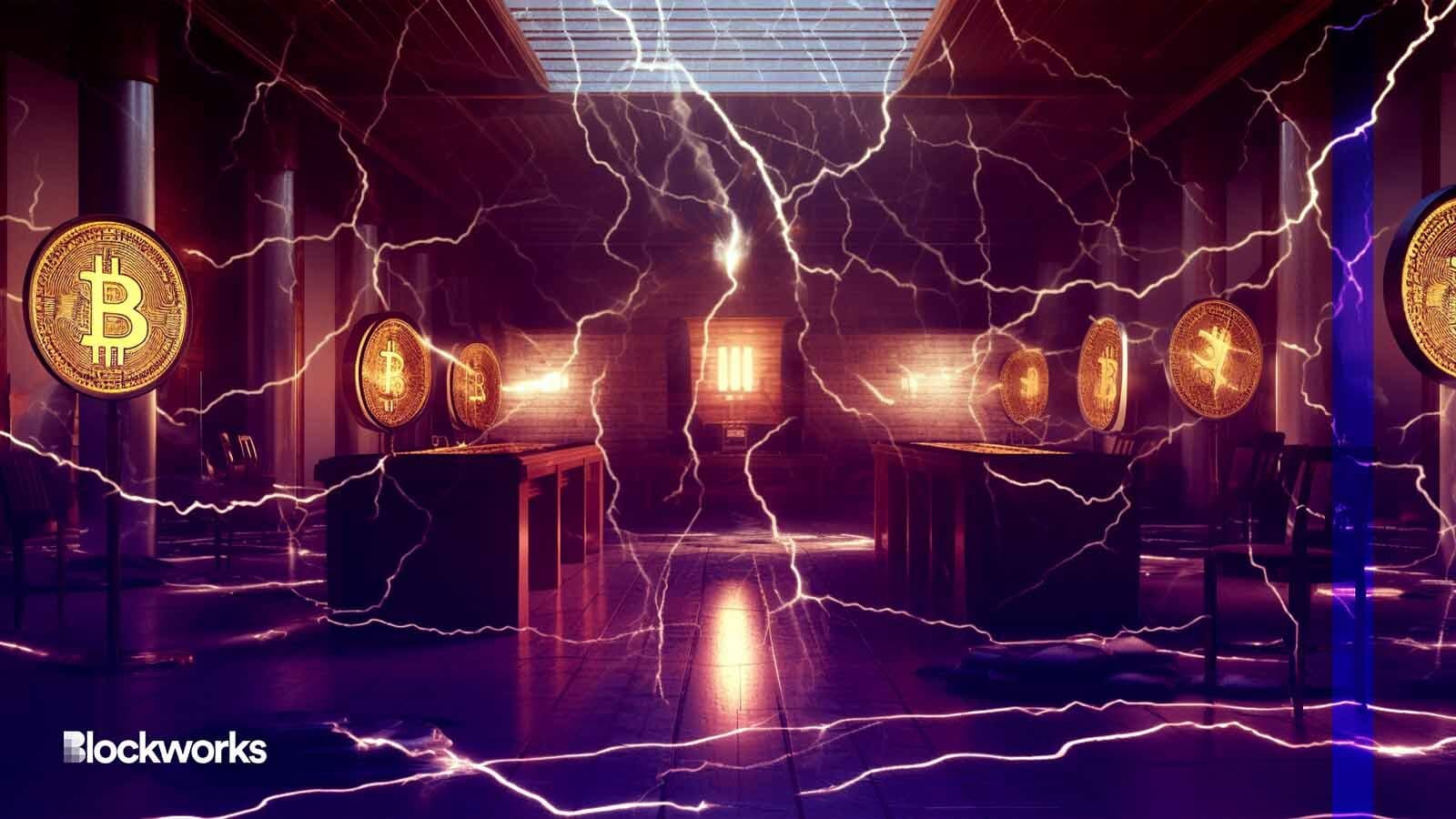Forget about bitcoin ETFs — let’s make a Lightning Fund
The current bitcoin ETF applications are missing out by failing to tap into bitcoin’s network effects

Midjourney modified by Blockworks
The influx of spot bitcoin ETF filings from institutional juggernauts like BlackRock and Fidelity is a critical moment for Bitcoin’s adoption.
By giving passive investors an opportunity to gain exposure to bitcoin through vehicles familiar to traditional investors — and without having to understand how to store bitcoin — the ETF will unlock a watershed moment for adoption.
But I believe that it’s actually a missed opportunity to focus all of our attention on what a bitcoin ETF could bring to crypto — instead, we should be exploring how a Lightning Network Fund could bring greater economic incentives to institutional participation in Bitcoin.
Bitcoin spot ETFs: 45 days away for 10 years
While the real magic of bitcoin happens with self-custody, it’s still a net benefit that an entirely new wave of people will gain access to a scarce commodity through a bitcoin ETF (once one eventually gets approved).
But the current bitcoin ETF applications are missing the greater upside potential by failing to tap into bitcoin’s network effects: The Lightning Network.
BlackRock’s ETF will provide price exposure to bitcoin and protect the buying power of many people, but it lacks exposure to the unprecedented utility of the network. By tapping into only one component of bitcoin’s utility — namely its uses as store of value and debasement hedge — large institutions like BlackRock have shown only a surface-level understanding of what’s possible with bitcoin.
Disrupting payments networks
For BlackRock or any large asset manager to launch an ETF, they actually need to buy and custody bitcoin anyway.
If BlackRock was really thinking ten steps ahead, they would deploy those bitcoin funds on the Lightning Network, earn non-custodial yield by providing payments infrastructure and pave the way for investors to gain exposure to the world’s best form of money with the world’s best payment network at the same time.
While the Lightning Network is still in its infancy, it is proving to be a disruptive force, with settlement costs a tiny fraction of existing settlement methods. The public Lightning Network has nearly $150 million in settlement capacity at this point in time, with banks like Santander and now the Federal Reserve Bank of Cleveland also showing an interest in its potential for borderless transactions.
Tapping into a Lightning Network fund
A Lightning fund would allow investors to gain exposure to not only bitcoin’s price, but also its emergent and growing utility as a medium of exchange.
Large holders of bitcoin are uniquely capable of providing settlement rail infrastructure that could be used to drive the cost of commerce to negligible levels. This is increasingly important as we in the US stare down the barrel of recession and desperately need to trim the fat accumulated from easy money policies of the past.
In practice, a Lightning fund would consist of investors purchasing shares of bitcoin that are held in Lightning-capable infrastructure. Fund managers could strategically deploy the bitcoin held within the fund into various Lightning channels. Node operators are already familiar with the process of deploying bitcoin in Lightning channels: The fees generated from supplying and maintaining the ledger more than pay for the costs of converting on-chain bitcoin to Lightning channels and back.
Read more from our opinion section: Making friends online is easier with blockchain
Fund managers would potentially be extremely interested in this setup, as it would enable them to show their skill in the emergent expertise of node management while capturing a yield and higher returns for their investors (or a higher admin fee percentage for the fund manager).
What’s more, this type of Lightning Network fund would increase the utility underlying bitcoin as a global store of value and medium of exchange. And on the demand side? Look no further than retirees, as this type of fund would be able to pay dividends to its shareholders.
Gradually, then suddenly
Just like the spot bitcoin ETF, the Lightning fund would pose some challenges, including finding the right legal structure to enable this type of investment.
Managing Lightning channels is a challenging art and requires an immense amount of data to perform the task well. Regulatory issues may also inevitably emerge, as the fund would need to be actively managed with allocations from within bitcoin to different nodes around the world. Protocol stability will pose another challenge as the various Lightning implementations may still experience costly force channel closures.
The Lightning Network’s success relies on its ability to attract users and liquidity. Large holders play a significant role in supporting and promoting the scalability and usability of both the Lightning Network and the Bitcoin ecosystem as a whole, and a fund would open up the potential for all investors to share in that growth.
We are living in a time of rapid change and opportunity where things happen gradually, then suddenly. Those that find a way to tap into the full stack of Bitcoin’s potential, like launching a Lightning Network fund, will be rewarded immensely. Like it or not, the truth is that these legacy institutions are in a position to either adapt or die. Only time will tell.
Get the news in your inbox. Explore Blockworks newsletters:
- The Breakdown: Decoding crypto and the markets. Daily.
- Empire: Crypto news and analysis to start your day.
- Forward Guidance: The intersection of crypto, macro and policy.
- 0xResearch: Alpha directly in your inbox.
- Lightspeed: All things Solana.
- The Drop: Apps, games, memes and more.
- Supply Shock: Bitcoin, bitcoin, bitcoin.






